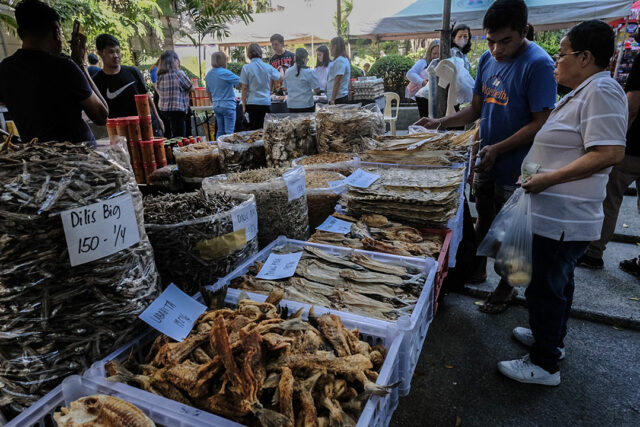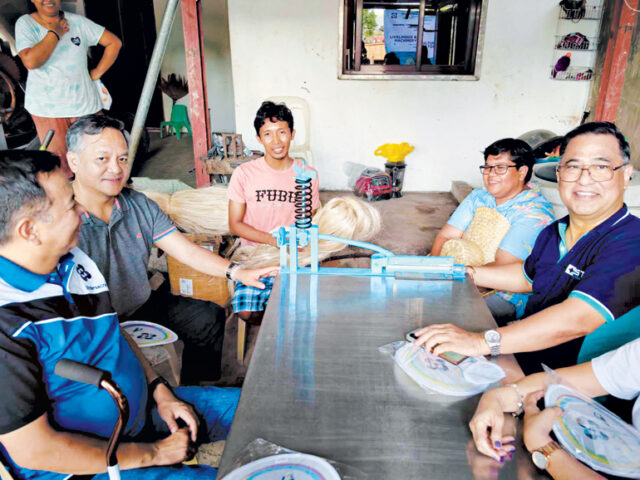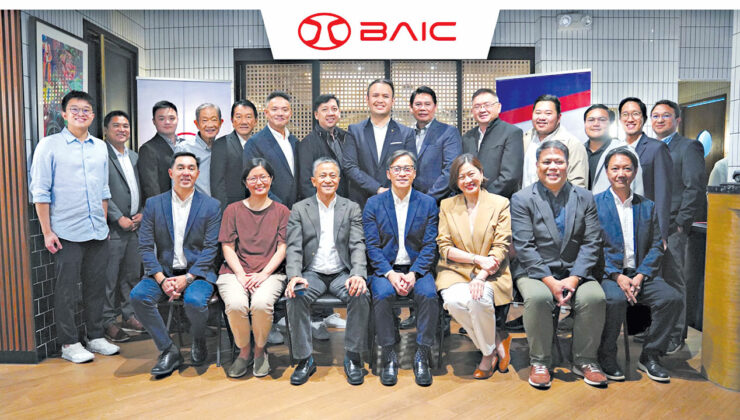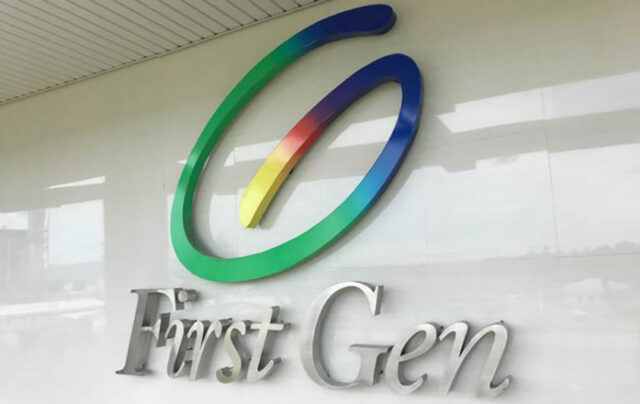By Luisa Maria Jacinta C. Jocson, Reporter
HEADLINE INFLATION likely quickened for a fourth straight month in May, mainly due to a spike in electricity costs, analysts said.
A BusinessWorld poll of 16 analysts yielded a median estimate of 4% for the consumer price index (CPI) in May. This is within the 3.7-4.5% forecast of the Bangko Sentral ng Pilipinas (BSP) for the month.
If realized, May inflation would be faster than 3.8% in April but slower than the 6.1% print a year earlier.

It would also mark the sixth straight month that inflation settled within the central bank’s 2-4% target range.
The Philippine Statistics Authority is set to release May inflation data on Wednesday (June 5).
“We expect CPI inflation to rise to 4% in May. The rise largely comes on the back of unfavorable base effects, and the sequential momentum likely remained contained,” Makoto Tsuchiya, an economist from Oxford Economics, said in an e-mail.
“Even with a modest month-on-month pickup, base effects remain unfavorable, and we expect inflation to still accelerate to 4% year on year — touching the BSP’s upper bound target,” HSBC economist for ASEAN (Association of Southeast Asian Nations) Aris D. Dacanay said in an e-mail.
Analysts said the faster inflation print in May is primarily due to higher electricity rates.
“Upward price pressures will come from higher electricity rates as retailers pass on higher costs from the Wholesale Electricity Spot Market amid a jump in electricity demand when temperatures spiked across the country in May,” Moody’s Analytics economist Sarah Tan said in an e-mail.
“That also resulted in power shortages, which led authorities to issue the red and yellow alerts,” she added.
From January to May, the National Grid Corp. of the Philippines had placed the Luzon and Visayas power grids on red alert for 12 and eight days, respectively.
Yellow alerts have been raised over Luzon and Visayas for a total of 27 and 26 days, respectively. Mindanao was placed under yellow alert for two days.
“The heatwave increased demand and prices for electricity, with the latest increase in Manila Electric Co. (Meralco) electricity rates,” Rizal Commercial Banking Corp. Chief Economist Michael L. Ricafort said in an e-mail.
Customers in areas served by Meralco saw their overall rate climb by P0.4621 per kilowatt-hour (kWh) to P11.4139 per kWh in May due to the increase in the generation charge.
“However, these upward pressures were tempered by lower costs of key food items such as rice, fish, and fruits, and rollbacks in LPG and domestic pump prices,” Chinabank Research said.
Security Bank Corp. Chief Economist Robert Dan J. Roces said food price growth likely slowed in May, although rice will still remain a “major culprit.”
In April, rice inflation was recorded at 23.9%, easing from 24.4% in March. Rice inflation in March was its fastest print since February 2009.
Agriculture department data showed that the average price of a kilogram of local well-milled rice ranged from P48-55 as of end-May while regular milled averaged P45-52 per kilogram.
UPTREND
Chinabank Research said it expects inflation to “sustain its recent uptrend and remain above the BSP’s target until July, unless significant price reversals materialize.”
Zamros Bin Dzulkafli, economist at Maybank Investment Banking Group, said that inflation would likely overshoot the 2-4% target band from May to July, in line with the central bank’s expectations.
The BSP is anticipating faster inflation from May to July but expects inflation to ease to the target after July.
“We expect the headline inflation to hover around 4% in the coming few months, but this is unlikely to make the BSP more hawkish, as such an overshoot is already priced in by the central bank,” Mr. Tsuchiya said.
Ms. Tan said if inflation settles below the upper end of the target, this would add to the case for a rate cut in August.
“This is contingent on subsequent readings before the August policy meeting staying below, or at, the upper bound, which is what we are expecting. Otherwise, the first cut may only come in the fourth quarter,” she added.
BSP Governor Eli M. Remolona, Jr. earlier said the central bank can cut rates as early as August, possibly by 25 basis points (bps).
Bank of the Philippine Islands Lead Economist Emilio S. Neri, Jr. said he expects the Monetary Board to “keep policy settings neutral” at the June 27 meeting.
“Rhetoric could become even less hawkish, especially if headline prints fall below expectations,” he added.
“I doubt that the May print will significantly affect the BSP’s thinking in June, assuming the breach of the 4% mark is only small and if core inflation remains subdued and stable,” Pantheon Chief Emerging Asia Economist Miguel Chanco said.
The Monetary Board kept its key policy rate steady at a 17-year high of 6.5% for a fifth straight meeting in May.
From May 2022 to October 2023, the central bank has raised borrowing costs by 450 bps to tame inflation.
NO RATE HIKE
Ms. Tan noted that the BSP is unlikely to deliver a rate hike this year.
“It is unlikely that inflation will sharply exceed the BSP’s upper target of 4%, so we don’t expect any more hikes. A cooling core inflation reading will also give BSP confidence to keep the policy rate steady,” she said.
Philippine National Bank (PNB) economist Alvin Joseph A. Arogo said that the BSP should not reduce rates until inflation can settle “sustainably” within target.
“Moreover, our monetary authorities should not cut ahead of the Fed or else risk further exchange rate weakness. If the Fed eases by 25 bps each in September and December, this opens the room for the BSP to follow in October and December,” Mr. Arogo added.
On May 21, the peso closed at P58.27 against the greenback, its first time closing at the P58-per-dollar level since Nov. 10, 2022.
Ruben Carlo O. Asuncion, chief economist at Union Bank of the Philippines, Inc., said a rate cut would likely be delivered later this year, but not before the US Federal Reserve.
“With inflation plateauing in the near-term despite the drought effects alongside a benign core, we believe the risks to the outlook has moderated that support a BSP rate cut later in the year,” he said in an e-mail.
“We do not believe the BSP will cut its policy rate before the Fed because the Monetary Board will wait until El Niño effects have receded, local food supply has normalized, and rice inflation has materially narrowed,” he added.
The Federal Reserve is more likely to deliver a long-awaited rate cut in September after a US Commerce department report showed inflation made a bit of progress toward the Fed’s 2% goal last month and spending softened, traders expect, Reuters reported.
After the data release, traders priced in about a 53% chance of a rate cut in September, versus about 49% before the report.
Mr. Dacanay likewise said that rate cuts are off the table until the Fed turns more dovish.
“The timing will be important to provide some support to the peso throughout the BSP’s easing cycle,” he added.

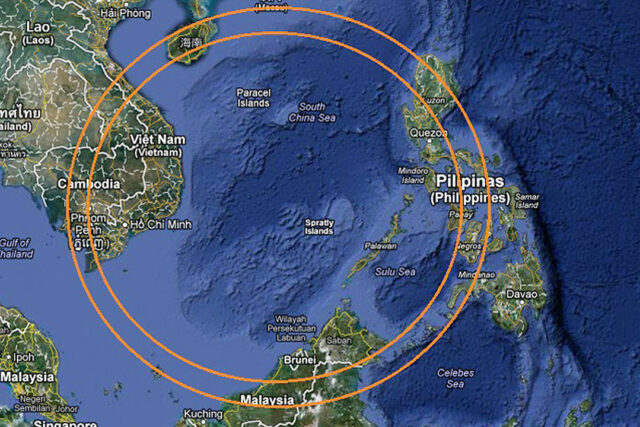


 The Hisense U8K Mini LED Pro TV is a testament to the brand’s commitment to innovation and quality. The collaboration with Abenson underscores the brand’s dedication on providing consumers with extraordinary experiences through cutting-edge technology.
The Hisense U8K Mini LED Pro TV is a testament to the brand’s commitment to innovation and quality. The collaboration with Abenson underscores the brand’s dedication on providing consumers with extraordinary experiences through cutting-edge technology. The Hisense U8K Mini LED Pro TV 85-inch model has features that fittingly makes it an MVP of TVs:
The Hisense U8K Mini LED Pro TV 85-inch model has features that fittingly makes it an MVP of TVs: Hisense continues to lead in the global market, the launch of the U8K Mini LED Pro TV represents a significant step forward in its mission to deliver innovative and environmentally friendly products that enhance the quality of life for millions of families worldwide
Hisense continues to lead in the global market, the launch of the U8K Mini LED Pro TV represents a significant step forward in its mission to deliver innovative and environmentally friendly products that enhance the quality of life for millions of families worldwide
